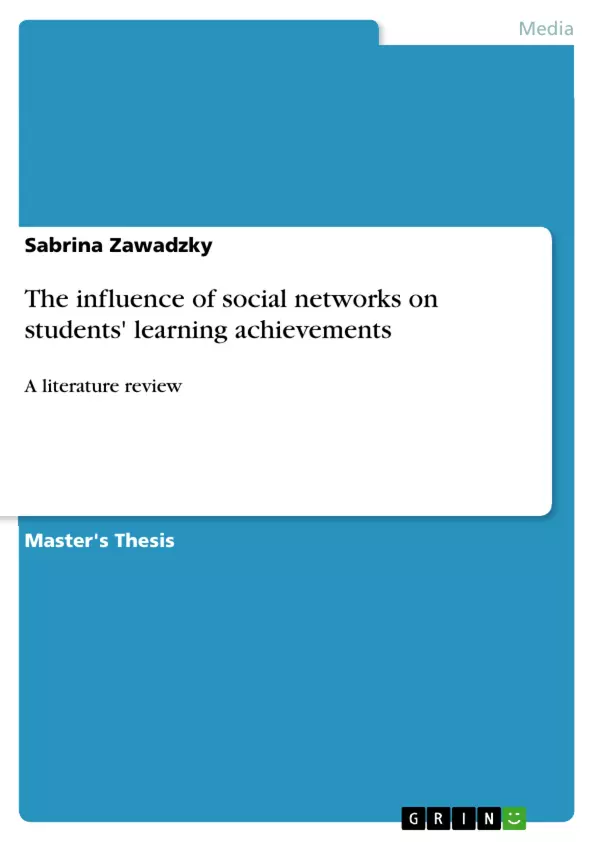This study raises an understanding of social network relationships among students and especially, how these ties affect the students’ learning achievements positively by creating social capital in designated networks. The thesis investigates the concept and measurement of social capital in university settings by applying a literature review.
Thus, this study analyses the present and past literature by a systematic literature search and suggesting a model that connects students’ backgrounds, social capital at university and students’ learning achievements.
Finally, results are presented and discussed, which show that all three dimensions of social capital influence students learning achievements in higher educational settings. However, not all specific components influence the different variables in the same manner and some have no influence. Furthermore, recommendations and directions for further research are provided. In sum, the study finds that a student’s social capital, generated from his or her social relations with parents, teachers and other peers, has a significant influence on the learning achievements.
Inhaltsverzeichnis (Table of Contents)
- Introduction to the topic
- Relevance of the topic
- Research objectives and structure of the thesis
- Conceptual framework
- Social capital
- Learning achievements
- Methodology
- Initial and pilot study
- Categorisation of the literature and literature review
- The influence of social networks on students' learning achievements
- Network composition
- Components of social capital
- Structural dimension of social capital
- Relational dimension of social capital
- Resource-based dimension of social capital
- Moderators and mediators of social capital and learning achievements
- Contingencies of social capital
- Discussion of the findings
- Recommendations for practice
Zielsetzung und Themenschwerpunkte (Objectives and Key Themes)
This study aims to understand the influence of social network relationships on student learning achievements, particularly focusing on how these ties contribute to social capital formation. It explores the concept and measurement of social capital in university settings through a systematic literature review and develops a model that links students' backgrounds, social capital, and learning achievements. The study then analyzes this model to determine the impact of social capital on students' academic performance.
- The influence of social networks on student learning achievements
- The role of social capital in university settings
- The relationship between students' backgrounds, social capital, and learning achievements
- The different dimensions of social capital and their impact on academic performance
- Recommendations for practice based on the findings of the study
Zusammenfassung der Kapitel (Chapter Summaries)
- Introduction to the topic: This chapter introduces the topic of social capital and its relevance in the context of student learning achievements. It also outlines the research objectives and the structure of the thesis.
- Conceptual framework: This chapter defines the key concepts of social capital and learning achievements, providing a theoretical foundation for the study.
- Methodology: This chapter describes the methodological approach used in the study, including the literature search process and the criteria for selecting relevant research.
- The influence of social networks on students' learning achievements: This chapter analyzes the influence of social networks on students' learning achievements, exploring different aspects of social capital and its impact on academic performance. It investigates the network composition, the components of social capital, and the role of moderators and mediators.
- Recommendations for practice: This chapter provides practical recommendations based on the findings of the study, suggesting ways to enhance student learning achievements through the promotion of social capital within university settings.
Schlüsselwörter (Keywords)
This study focuses on the relationship between social networks, social capital, and student learning achievements in higher education. Key terms include social capital, network composition, structural dimension, relational dimension, resource-based dimension, learning achievements, and university settings.
- Arbeit zitieren
- M.Sc. Sabrina Zawadzky (Autor:in), 2016, The influence of social networks on students' learning achievements, München, GRIN Verlag, https://www.grin.com/document/432498



